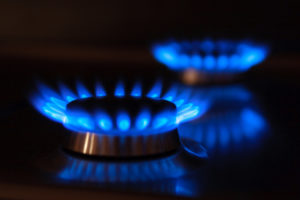 Natural gas rose on Tuesday after sliding for three sessions before a fresh cold blast hits the East late this week following a brief warm-up over the next few days. Gains, however, remained capped as the rest of the country continued to enjoy seasonal or warmer weather, with the first inventory build for the season lined up for Thursday.
Natural gas rose on Tuesday after sliding for three sessions before a fresh cold blast hits the East late this week following a brief warm-up over the next few days. Gains, however, remained capped as the rest of the country continued to enjoy seasonal or warmer weather, with the first inventory build for the season lined up for Thursday.
Natural gas for delivery in April traded 0.59% higher at $2.749 per million British thermal units at 9:42 GMT, shifting in a daily range of $2.770-$2.735. The contract fell 1.9% on Monday to $2.733 per mBtu after it slid 4.6% the previous two sessions.
According to NatGasWeather.com, natural gas demand in the US will be low-moderate compared to normal through March 30th, with a neutral weather trend for the following seven days, apart from the Northeast where conditions could turn slightly cooler.
As the latest cold front over the north-eastern US fizzles, mild temperatures will spread across the Great Lakes and eastern US today, pushing highs into the 50s and 60s. However, the warm-up will last briefly as a new series of Canadian weather systems arrives on Thursday into Friday, with below-normal temperatures pushing into the Southeast, including Texas, and lasting through the weekend.
Until then, the southern US, including Texas, will see temperatures peak in the 80s and 90s, NatGasWeather.com said, while the West remains warm and dry, apart from the Northwest which will see cooler conditions and rains.
After temperatures moderate Sunday into Monday over the Great Lakes and eastern US, another reinforcing cold blast will follow on March 31st, although it will quickly give way to high pressure building on April 2-3rd. Warm weather will persist over the West throughout next week, apart from the occasional cooler Pacific weather systems across the Northwest, while readings over the central and southern US will hover near the seasonal.
A Canadian weather system will arrive to the north-eastern US on April 3-4th and is unclear how much cold air it will tap before crossing the border. Depending on the systems intensity and how far into the US it reaches, it will set the sentiment tone over the next couple of weeks.
Readings
According to AccuWeather.com, New York will see temperatures range between 45 and 48 degrees on March 25th, compared to the average 38-53, and will remain below-usual through the end of March. The high in Chicago on March 26th will be 53 degrees, 2 above usual, before dropping to 31 degrees two days later. Highs will reestablish in the 50s as of March 30th.
Down South, Houston will see temperatures peak at 79 degrees on March 25-26th, 5 above usual, and will remain in the 70s over the next couple of weeks. On the West Coast, Los Angeles will see temperatures max out at 94-97 degrees on March 26-27th, compared to the average 71, before easing to the upper 70s and lower 80s the following seven days.
Stockpiles
The Energy Information Administration reported last Thursday that US natural gas stockpiles fell 45 billion cubic feet in the week ended March 13th, matching the five-year average drop but falling short of analysts’ median estimate of -48 bcf. Total gas held in US storage hubs amounted to 1.467 trillion cubic feet, 13.3% below the five-year average inventory level of 1.692 trillion and 52.8% above year-ago stockpiles at 960 trillion cubic feet.
This week’s supply report will likely register a small inventory build, around 20 billion cubic feet, as most of the US enjoyed seasonal and warmer weather last week, while a cold blast across the Northeast had a limited reach. The five-year average withdrawal for the week ended March 20th is 19 billion cubic feet, while the year-ago storage drop was -56 bcf.
The following report, due on April 2nd, may reflect a near-average or slightly thinner inventory decline as widespread seasonal and warmer weather persists, while the north-eastern US sees a cold break mid-week. The five-year average withdrawal for the week ending March 27th is -22 bcf, while gas in storage declined by 71 bcf a year ago. Inventories are unlikely to gain much ground on deficits over the next three supply reports as cold Canadian air lurks across the border.
Pivot points
According to Binary Tribune’s daily analysis, April natural gas futures’ central pivot point stands at $2.727. In case the contract penetrates the first resistance level at $2.762 per million British thermal units, it will encounter next resistance at $2.792.
If breached, upside movement may attempt to advance to $2.827 per mBtu. If the energy source drops below its S1 level at $2.697 per mBtu, it will next see support at $2.662. If the second key support zone is breached, the power-station fuel’s downward movement may extend to $2.632 per mBtu.
In weekly terms, the central pivot point is at $2.800. The three key resistance levels are as follows: R1 – $2.921, R2 – $3.055, R3 – $3.176. The three key support levels are: S1 – $2.666, S2 – $2.545, S3 – $2.411.





